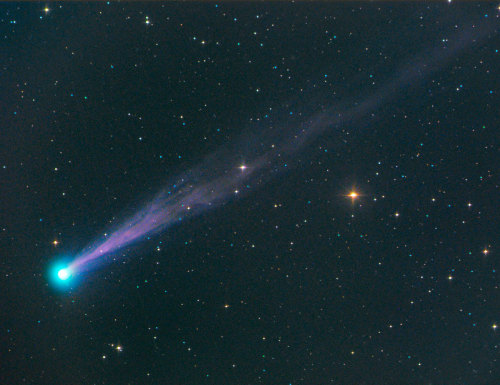Woah :o
Woah :o
So, basically, like the Mission Space ride at Epcot (that one is my favoriteeeee)?
WANT MORE? GET YOUR HEAD STUCK IN THE STARS AT MY BLOG!

Testing and Training on the Boeing Starliner : NASA astronaut Mike Fincke works through a check list inside a mockup of Boeing’s CST-100 Starliner during a simulation at NASA’s Johnson Space Center on Aug. 21, 2019. (via NASA)
More Posts from Acosmicgeek and Others
When can I move???
That’s so gorgeous though. I hate artificial lighting. These pictures seem so extraordinary and gorgeous but most people don’t know that the sky EVERYWHERE is gorgeous but our lighting just ruins it.
I remember one time when I went out in the middle of Arizona and I could just barely see the Milky Way. It’s quite a sight. I wish we were able to see it every night.
WANT MORE? GET YOUR HEAD STUCK IN THE STARS AT MY BLOG!

Summer Milky Way at Boddington, Western Australia
Nikon d5500 - 50mm - ISO 3200 - f/2.8 - Foreground: 9 x 15 seconds - Sky: 26 x 30 seconds - iOptron SkyTracker - Hoya Red Intensifier filter
This basically sums it up.
Well, it doesn’t show the other things stars can be after their deaths. But it was a nice video :)
WANT MORE? GET YOUR HEAD STUCK IN THE STARS AT MY BLOG!
I mean, that is true. Atoms would really like communism (aside from Noble gases, of course).
Fluorine be like SHARING IS CARING
WANT MORE? GET YOUR HEAD STUCK IN THE STARS AT MY BLOG!

Hydrogen bond vibes
Omg ;D
I love that so much.
Now I really want Magical Girls who represent each stage in a star’s life. Where’s my Magical Girl Neutron Star!?
WANT MORE? GET YOUR HEAD STUCK IN THE STARS AT MY BLOG!





concept: team of magical girls who each study a different branch of chemistry at university and their magical powers are based on their branch of study. watch out for physchem, she can do weird quantum shit
For a star to be born, there is one thing that must happen: a gaseous nebula must collapse. So collapse. Crumble. This is not your destruction. This is your birth.
Zoe Skylar

(via the-wolf-and-moon)
Everything that is created comes from destruction, that’d just how our universe works.
WANT MORE? GET YOUR HEAD STUCK IN THE STARS AT MY BLOG!
Looks like I’m getting a new wallpaper
It’s so beautiful ;(
WANT MORE? GET YOUR HEAD STUCK IN THE STARS AT MY BLOG!
![Sunset In The Kananaskis Valley, Alberta. [2853 X 3566] [oc] - Author: ProjectOxide On Reddit](https://64.media.tumblr.com/4acdc8c530b36b0a46d6fdcd8512ba15/3f0453439e862857-4a/s500x750/e2c24b329e0a1ff0bdf4a929883229be487175eb.jpg)
Sunset in the Kananaskis Valley, Alberta. [2853 x 3566] [oc] - Author: ProjectOxide on reddit
I love that
After my Life of Stars series I’ve been wanting to do one on galaxies. Maybe I will hmmmmm
WANT MORE? GET YOUR HEAD STUCK IN THE STARS AT MY BLOG!
Galaxies: Types and morphology
A galaxy is a gravitationally bound system of stars, stellar remnants, interstellar gas, dust, and dark matter. Galaxies range in size from dwarfs with just a few hundred million (108) stars to giants with one hundred trillion (1014) stars, each orbiting its galaxy’s center of mass.

Galaxies come in three main types: ellipticals, spirals, and irregulars. A slightly more extensive description of galaxy types based on their appearance is given by the Hubble sequence.

Since the Hubble sequence is entirely based upon visual morphological type (shape), it may miss certain important characteristics of galaxies such as star formation rate in starburst galaxies and activity in the cores of active galaxies.
Ellipticals

The Hubble classification system rates elliptical galaxies on the basis of their ellipticity, ranging from E0, being nearly spherical, up to E7, which is highly elongated. These galaxies have an ellipsoidal profile, giving them an elliptical appearance regardless of the viewing angle. Their appearance shows little structure and they typically have relatively little interstellar matter. Consequently, these galaxies also have a low portion of open clusters and a reduced rate of new star formation. Instead they are dominated by generally older, more evolved stars that are orbiting the common center of gravity in random directions.
Spirals

Spiral galaxies resemble spiraling pinwheels. Though the stars and other visible material contained in such a galaxy lie mostly on a plane, the majority of mass in spiral galaxies exists in a roughly spherical halo of dark matter that extends beyond the visible component, as demonstrated by the universal rotation curve concept.
Spiral galaxies consist of a rotating disk of stars and interstellar medium, along with a central bulge of generally older stars. Extending outward from the bulge are relatively bright arms. In the Hubble classification scheme, spiral galaxies are listed as type S, followed by a letter (a, b, or c) that indicates the degree of tightness of the spiral arms and the size of the central bulge.
Barred spiral galaxy

A majority of spiral galaxies, including our own Milky Way galaxy, have a linear, bar-shaped band of stars that extends outward to either side of the core, then merges into the spiral arm structure. In the Hubble classification scheme, these are designated by an SB, followed by a lower-case letter (a, b or c) that indicates the form of the spiral arms (in the same manner as the categorization of normal spiral galaxies).
Ring galaxy

A ring galaxy is a galaxy with a circle-like appearance. Hoag’s Object, discovered by Art Hoag in 1950, is an example of a ring galaxy. The ring contains many massive, relatively young blue stars, which are extremely bright. The central region contains relatively little luminous matter. Some astronomers believe that ring galaxies are formed when a smaller galaxy passes through the center of a larger galaxy. Because most of a galaxy consists of empty space, this “collision” rarely results in any actual collisions between stars.
Lenticular galaxy

A lenticular galaxy (denoted S0) is a type of galaxy intermediate between an elliptical (denoted E) and a spiral galaxy in galaxy morphological classification schemes. They contain large-scale discs but they do not have large-scale spiral arms. Lenticular galaxies are disc galaxies that have used up or lost most of their interstellar matter and therefore have very little ongoing star formation. They may, however, retain significant dust in their disks.
Irregular galaxy

An irregular galaxy is a galaxy that does not have a distinct regular shape, unlike a spiral or an elliptical galaxy. Irregular galaxies do not fall into any of the regular classes of the Hubble sequence, and they are often chaotic in appearance, with neither a nuclear bulge nor any trace of spiral arm structure.
Dwarf galaxy

Despite the prominence of large elliptical and spiral galaxies, most galaxies in the Universe are dwarf galaxies. These galaxies are relatively small when compared with other galactic formations, being about one hundredth the size of the Milky Way, containing only a few billion stars. Ultra-compact dwarf galaxies have recently been discovered that are only 100 parsecs across.
Interacting

Interactions between galaxies are relatively frequent, and they can play an important role in galactic evolution. Near misses between galaxies result in warping distortions due to tidal interactions, and may cause some exchange of gas and dust. Collisions occur when two galaxies pass directly through each other and have sufficient relative momentum not to merge.
Starburst

Stars are created within galaxies from a reserve of cold gas that forms into giant molecular clouds. Some galaxies have been observed to form stars at an exceptional rate, which is known as a starburst. If they continue to do so, then they would consume their reserve of gas in a time span less than the lifespan of the galaxy. Hence starburst activity usually lasts for only about ten million years, a relatively brief period in the history of a galaxy.
Active galaxy
A portion of the observable galaxies are classified as active galaxies if the galaxy contains an active galactic nucleus (AGN). A significant portion of the total energy output from the galaxy is emitted by the active galactic nucleus, instead of the stars, dust and interstellar medium of the galaxy.

The standard model for an active galactic nucleus is based upon an accretion disc that forms around a supermassive black hole (SMBH) at the core region of the galaxy. The radiation from an active galactic nucleus results from the gravitational energy of matter as it falls toward the black hole from the disc. In about 10% of these galaxies, a diametrically opposed pair of energetic jets ejects particles from the galaxy core at velocities close to the speed of light. The mechanism for producing these jets is not well understood.

The main known types are: Seyfert galaxies, quasars, Blazars, LINERS and Radio galaxy.
source
images: NASA/ESA, Hubble (via wikipedia)
You could say that they’re very ... NOBLE!
hehe
WANT MORE? GET YOUR HEAD STUCK IN THE STARS AT MY BLOG!

i hope i translated it correctly
Lookin’ Good!
I’ve been wanting to be an Astronaut for Halloween but sadly I live in Florida and the heat might suffocate me in a full suit! Perhaps a nice NASA shirt and hat and maybe a fake ID badge and I can go as a scientist :D
WANT MORE? GET YOUR HEAD STUCK IN THE STARS AT MY BLOG!

Artemis Generation Spacesuit Event : Amy Ross, a spacesuit engineer at Johnson Space Center, NASA Administrator Jim Bridenstine, watch as Kristine Davis and Dustin Gohmert wear prototype spacesuits. (via NASA)
-
 mayling39 liked this · 4 years ago
mayling39 liked this · 4 years ago -
 meditationrelaxationmusic reblogged this · 4 years ago
meditationrelaxationmusic reblogged this · 4 years ago -
 xbluuetardisx liked this · 4 years ago
xbluuetardisx liked this · 4 years ago -
 lxrd-finesse liked this · 4 years ago
lxrd-finesse liked this · 4 years ago -
 johnnyreyna liked this · 4 years ago
johnnyreyna liked this · 4 years ago -
 highasomaha liked this · 4 years ago
highasomaha liked this · 4 years ago -
 kontnuumsgod6 liked this · 4 years ago
kontnuumsgod6 liked this · 4 years ago -
 redthreads liked this · 4 years ago
redthreads liked this · 4 years ago -
 randomscientist reblogged this · 4 years ago
randomscientist reblogged this · 4 years ago -
 c3p-mo reblogged this · 4 years ago
c3p-mo reblogged this · 4 years ago -
 slcr303 liked this · 4 years ago
slcr303 liked this · 4 years ago -
 raphawela liked this · 4 years ago
raphawela liked this · 4 years ago -
 teutonic-knight07 liked this · 4 years ago
teutonic-knight07 liked this · 4 years ago -
 oldboy-things liked this · 4 years ago
oldboy-things liked this · 4 years ago -
 new-age-dreamer-17 liked this · 4 years ago
new-age-dreamer-17 liked this · 4 years ago -
 parthanravi liked this · 4 years ago
parthanravi liked this · 4 years ago -
 tudoplanta-tudomuda liked this · 4 years ago
tudoplanta-tudomuda liked this · 4 years ago -
 pouterpufftrain liked this · 4 years ago
pouterpufftrain liked this · 4 years ago -
 waltzfordeborah--esquire reblogged this · 4 years ago
waltzfordeborah--esquire reblogged this · 4 years ago -
 thedisc0panda reblogged this · 4 years ago
thedisc0panda reblogged this · 4 years ago -
 haceneblog liked this · 4 years ago
haceneblog liked this · 4 years ago -
 viagem-para-narnia reblogged this · 4 years ago
viagem-para-narnia reblogged this · 4 years ago -
 viagem-para-narnia liked this · 4 years ago
viagem-para-narnia liked this · 4 years ago -
 catiebird1812 liked this · 4 years ago
catiebird1812 liked this · 4 years ago -
 elithorwig liked this · 4 years ago
elithorwig liked this · 4 years ago -
 alyssanicoleguajardo-blog reblogged this · 4 years ago
alyssanicoleguajardo-blog reblogged this · 4 years ago -
 greys-anatomy-hoe liked this · 4 years ago
greys-anatomy-hoe liked this · 4 years ago -
 webwormmm liked this · 4 years ago
webwormmm liked this · 4 years ago -
 acosmicgeek reblogged this · 4 years ago
acosmicgeek reblogged this · 4 years ago -
 kiradharan liked this · 4 years ago
kiradharan liked this · 4 years ago -
 thatschill111-blog liked this · 4 years ago
thatschill111-blog liked this · 4 years ago -
 sizzlingauthorfishbear liked this · 4 years ago
sizzlingauthorfishbear liked this · 4 years ago -
 reachfortheotherside reblogged this · 4 years ago
reachfortheotherside reblogged this · 4 years ago -
 reachfortheotherside liked this · 4 years ago
reachfortheotherside liked this · 4 years ago -
 o221a liked this · 4 years ago
o221a liked this · 4 years ago -
 airotkiv710 liked this · 4 years ago
airotkiv710 liked this · 4 years ago -
 89markie liked this · 4 years ago
89markie liked this · 4 years ago -
 poporano liked this · 4 years ago
poporano liked this · 4 years ago -
 thought-ripples liked this · 4 years ago
thought-ripples liked this · 4 years ago -
 willowchild liked this · 4 years ago
willowchild liked this · 4 years ago -
 comebackstoryofalifetime liked this · 4 years ago
comebackstoryofalifetime liked this · 4 years ago -
 mlmiii liked this · 4 years ago
mlmiii liked this · 4 years ago

